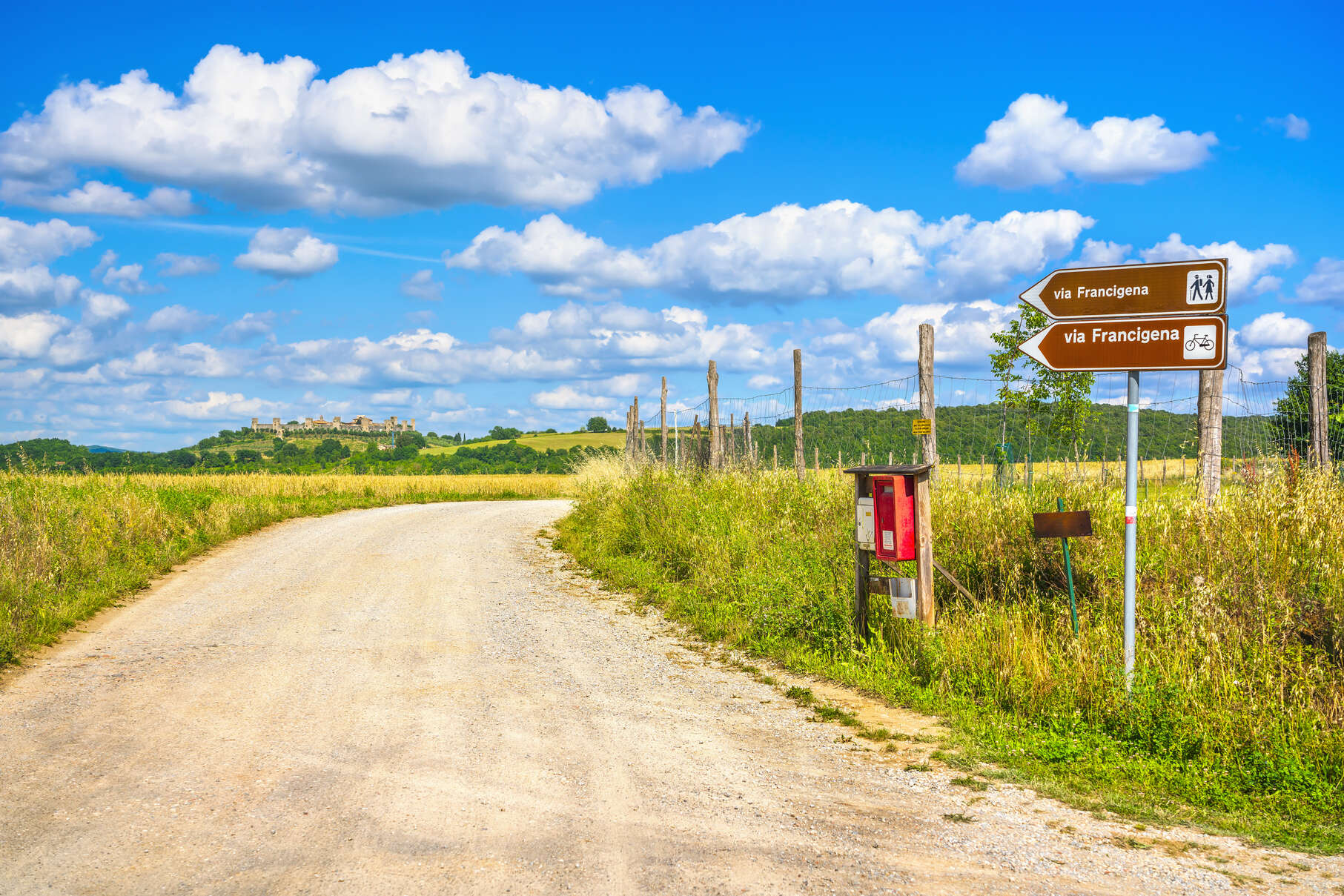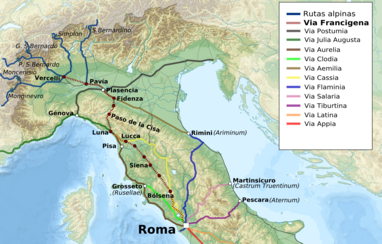Via Francigena
The Via Francigena is a pilgrimage route stretching from Canterbury to Rome, which was first mentioned in the 11th century. It is one of the three major pilgrim routes, along with the Camino de Santiago and the Via Dolorosa. It is not a single road (as is sometimes stated) but a network of ancient roads and paths through France, Switzerland and Italy.
The meaning of the itinerary
The Via Francigena is a pilgrimage route that began in Canterbury, England, and ended at the tomb of St. Peter in Rome. The route was popular in medieval times, especially during the 11th and 12th centuries and many people took advantage of the route to make a religious journey between England and Italy. The aim of European pilgrims was to reach Rome, the eternal city and burial place of St Peter. Here they could gain a plenary indulgence for themselves or their loved ones. According to church doctrine, this meant the remission of the temporal punishment due to sin. As well as being a religious path, the Via Francigena was also an important commercial route.
What were the pilgrims?
Pilgrims who had traveled this route came from various countries such as England, Flanders, Germany and Switzerland. These pilgrims were very different one from another: many were wealthy, but others were poor; some traveled alone, while others went in groups; some had a great deal of knowledge about routes and places along the way, while others had barely any idea of where they were headed; some were young while others were old. Because the journey was so long and dangerous, pilgrims often spent a year or two preparing. It usually took around 45 days for them to complete the route.
Tuscany from north to south
A journey along the Francigena reveals an incredible beauty, from the north to the south of Tuscany. From the wooded Lunigiana, which contains treasures such as Pontremoli, villages, parish churches and castles, you can go up to Pietrasanta and then descend to the valley as far as Lucca. You can cross the hills of San Miniato and walk until you see the towers of San Gimignano, pass Monteriggioni, enter Siena and then continue to the Amiata and Val D'Orcia, going up to Radicofani.
There are around 15 routes through Tuscany. Each of them has a different length, difficulty level and sights along the way. To choose the most suitable option and orient better on a trip, you can download the Via Francigena app. It is the official app of the European Association of the Via Francigena Ways, which allows you to locate your position on the route through the device GPS, even without an internet connection. In the app you can also find accommodations, food establishments and lots of sights.













